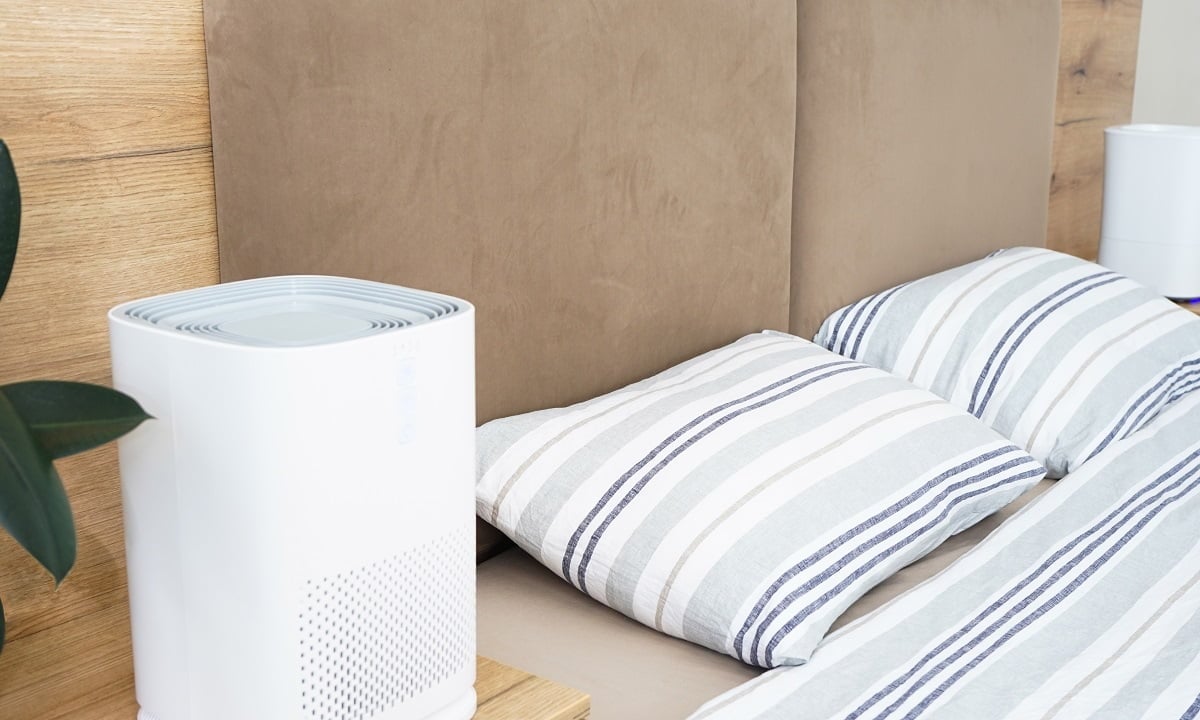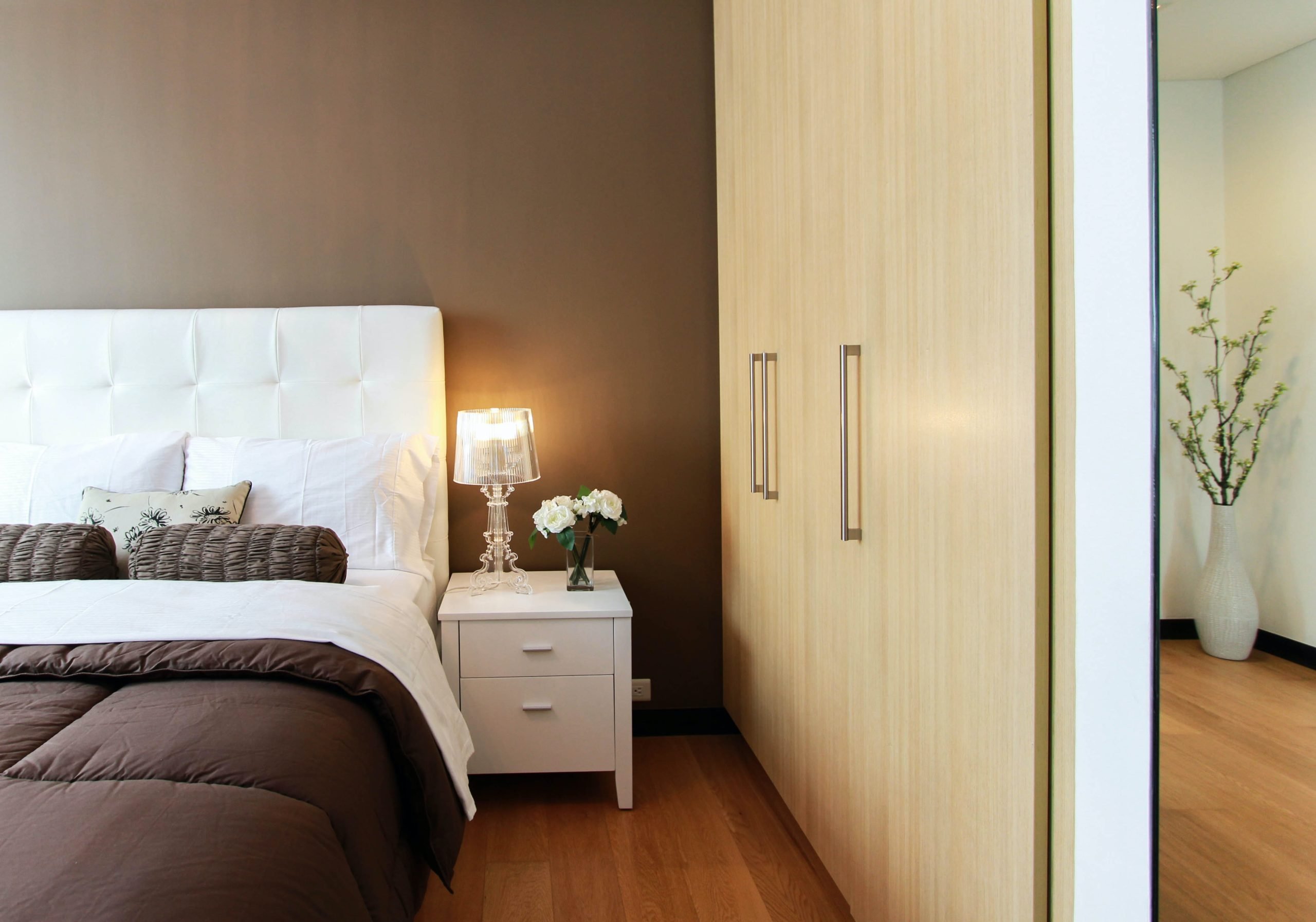Perhaps, you’ve got a dehumidifier for your bedroom to keep the space free from mold, bacteria, and allergens that trigger allergies.

Such allergens can cause chest pain, wheezing, sneezing, eye irritation, and even worse– aspergillosis. As such, dehumidifiers are a blessing for overly humid spaces– be it the living room, basement, or bathroom.
Now, many homeowners buy dehumidifiers but cannot determine the best place to keep them. Well, since dehumidifiers regulate humidity levels by removing excessive moisture from the space, they should be placed close to damp locations or areas with high humidity levels.
Instead of moving your dehumidifier from one corner to another, read our guide to know where you should place it in your bedroom. Let’s dive into the deets!
Dehumidifier Placement Guide

Excess humidity in any space provides a hospitable environment for mold and mildew to thrive. Later, molds release spores in the air, which triggers allergic reactions, such as skin rash, runny nose, and shortness of breath.
Irrespective of whether you suffer from allergies, having a dehumidifier in your home is a must. Besides eliminating mold and mildew, these devices keep your space clean, promoting a healthy and hygienic environment.
Where To Put Dehumidifier In Bedroom?
Finding the right size dehumidifier isn’t as challenging as deciding the right spot to place it to enhance its functionality. Assuming that your bedroom has a leaky ceiling or damp walls, the humidity level of the space is higher than in the other rooms of your home.
In that case, you must place the device in the center of the room where there is proper air circulation to work efficiently. A dehumidifier draws damp air from your bedroom and releases it back by converting it into dry and fresh air to ensure adequate ventilation.
As dehumidifiers contain a tank to store water, you should never keep them close to the TV, bedroom refrigerators, or other electronic appliances. Though they are less likely to leak, you must still avoid placing them near electronics to avoid damaging them.
When placing your dehumidifier, keep in mind that you’ll have to empty the tank from time to time. So, keep the device in such a space that the tank can be easily detached for cleaning.
If that seems too much of a task, some dehumidifiers can be connected with a hose to empty the water tank, so you might as well go for those models. You can either connect the hose to the laundry room or the bathroom to drain the tank regularly.
Things To Consider While Choosing The Best Place For Your Bedroom Dehumidifier
There are three factors that every homeowner should consider while figuring out the right spot for placing their dehumidifier. They are as follows:
1. Source Of Moisture
Every homeowner must place a dehumidifier at the spot closest to the moisture source. This way, the machine can eliminate moisture from the room quickly before it infiltrates other spaces.
2. Room Size
No doubt, the room size is important in the decision-making process, but you should also consider it when deciding on the right spot to place the dehumidifier.
In large bedrooms, a dehumidifier must be placed in the center to ensure maximum coverage. When it comes to small bedrooms, you can place the device wherever you want because there isn’t much space to cover.
3. Uncluttered Space
Aside from the room size, dehumidifiers should be placed in uncluttered spaces only then will they function properly. If you place them too close to the wall, furniture, or other objects, the exhaust vents get blocked, affecting their efficiency.
Make sure the space is uncluttered so that they can suck in the damp air and eliminate excess humidity, making the space clean and hygienic.
Other Rooms Where You Can Put Your Dehumidifier For Eliminating Excess Moisture
A dehumidifier is a versatile device that can be used in basements, laundry rooms, and other spaces to remove excess moisture from the air. Before you place it in other rooms, use a hygrometer to know the relative humidity level of all the spaces. Whichever room has the most moisture, keep your device in that room first to remove excess humidity.
1. Bathroom
Unwinding yourself by taking a long shower sounds like a perfect way to call it a day. But did you know that steamy hot showers raise humidity levels in the bathroom and provide the perfect environment for mold and mildew to grow?
What’s worse is that warm air damages the bathroom cabinets and vanities, causing the paint to peel.
So, if you have humidity problems in the bathroom, consider using a dehumidifier to get rid of excess moisture. As your bedroom dehumidifier is a portable device, you can take it to the bathroom and set it up to trap moist air while regulating room humidity levels.
After taking a bath, simply run the dehumidifier for about 20 minutes to eliminate excess moisture from the space. If your bedroom device is large, we suggest getting a small bathroom dehumidifier to sit on the shelf or vanity.
2. Basement
There’s no denying that basements contain washers and water heaters. And, since they lack proper ventilation, humidity builds up quickly, allowing allergens, mold, and mildew to thrive in the space.
Besides triggering allergic reactions, they damage the appliances kept in the space. To maintain humidity levels, all you need to do is place a dehumidifier and let it do the job.
Many basements have plumbing lines installed for washing machines, which makes it easy to drain water. For large basements, you’ll have to go for a unit that will dehumidify the entire space without issues.
However, most people prefer using an air conditioner in the basement because it lowers the temperature while reducing humidity. Now, the question is– what is better for a basement: air conditioner or dehumidifier? Of course, a dehumidifier is a better option because air conditioners won’t eliminate mold or pesky allergens from the space. Moreover, the former reduces humidity levels while keeping utility bills low.
3. Living Rooms
If mold spores on the living room walls are ruining your beautiful home, it’s about time to use a dehumidifier in the space. As living rooms are large, you must place your dehumidifier near the source of humidity.
That is to say, the front door is the best space to place your dehumidifier because the humid air sneaks in from it.
Your bedroom dehumidifier may not work as efficiently in the living room as it does in small rooms. Hence, a whole house dehumidifier with an HVAC system is better for large spaces.
4. Crawl Spaces
Believe it or not, crawl spaces are the most humid place in any home. This usually happens during the summer when the warm outside air sneaks into the cool spaces, leading to condensation.
Unlike warm air, cool air cannot hold moisture, so humidity levels rise in such spaces.
Besides, inadequate insulation and leaky pipes contribute to high humidity levels in crawled spaces. So, a compact and portable dehumidifier will come in handy for reducing humidity levels.

Where To Put Dehumidifier In Bedroom Final Words
Now that you know the answer to the question– “should I have a dehumidifier in my bedroom?” Are you ready to spend money on the best one? However, the functionality of a dehumidifier depends upon the position you place it in.
In case you’re unable to choose the right spot, simply place the device against the damp wall or the source of moisture– be it a window, door, or any other space. Also, make sure the space isn’t cluttered, or it will hamper the productivity of the unit.
That’s all there is to it. Hopefully, you’ll choose the best spot to place your dehumidifier in your bedroom and enjoy undisturbed slumber.
Toodles!
